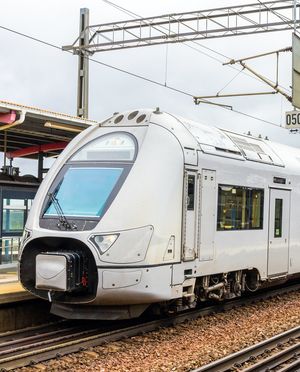KANBrief 3/18

The EU Machinery Directive does not apply to rail vehicles, and they are also explicitly excluded from the scope of the German Ordinance on workplaces (The German ordinance on workplaces (ArbStättV) transposes EU Directive 89/654/EEC into German law. Its scope excludes vehicles used in public Transport.) However, rail vehicles constitute work equipment in the sense of the German ordinance on industrial safety and health. What role do standards play in railway legislation, and how can the workplaces of engine drivers be designed to be safe? These were among the questions raised at a discussion between experts, hosted by KAN, of railway legislation, standardization and occupational safety and health.
On 18 June 2018, representatives of the state authorities, accident insurance institutions, manufacturers, railway operators, trade unions, standards bodies and the LASI met in Sankt Augustin to discuss legal issues relating to occupational safety and health and the technical safety of rail vehicles. They discussed the areas in which action is considered necessary, what can be concluded from the OSH rules and regulations, for example with regard to risk assessment (see also DGUV Informative publication 214-085 (pdf, in german) governing OSH requirements for locomotives, January 2017), and the legal arguments with which the occupational safety and health lobby can propose OSH provisions.
An expert from the German Federal Railway Authority (EBA) explained that European Directive 2016/797/EU (pdf) on the interoperability of the rail system within the European Union had overriding status in the hierarchy of the body of rules and regulations. The directive is supported by technical specifications for interoperability (TSIs). The TSIs contain certain requirements relating to occupational safety and health, but are generally drawn up without the involvement of OSH experts. They also make reference in some cases to standards, which as a result become binding. The leaflets of the International Union of Railways (UIC), which supplement the body of regulations, are very detailed but less binding in nature.
It became clear from the discussion that the body of regulations is undergoing a process of change. Detailed requirements from the TSIs are progressively being transferred to standards. The occupational safety and health lobby must pay particular attention to these standards to ensure that they attain a level of safety that is comparable to that of other workplaces.
In the past, KAN comments on standards in the railways sector have often been geared to the principles of occupational safety and health in the area of machine safety. Legally, this principle is questionable, since railway operations lie outside the scope of the EU Machinery Directive. The European Commission's position is that the inapplicability of the Machinery Directive is compensated for in equal measure by European railways legislation.
The occupational safety and health lobby sees clear differences between the two, however. For example, it is not acceptable that significantly smaller and less ergonomic access points and emergency exits are permitted on railway vehicles than those permitted on machinery (prEN 16186-4, Railway applications – Driver's cab – Part 4: Layout and access, 2017-07). The critical dimensions in this case have already found their way into the TSI (Regulation (EU) No 1302/2014 concerning a technical specification for interoperability relating to the ‘rolling stock – locomotives and passenger rolling stock’ subsystem of the rail system in the European Union). Tall and heavy locomotive drivers thus face problems, despite the seat in the driver's cab being rated for a driver weight of up to 130 kg. The claim that limitations are imposed by design requirements is reasonable only to a degree, since locomotives exist on which larger design dimensions have been implemented.
A positive aspect is the existence at European level of Working Group WG 51 (Labour Health & Safety) under Technical Committee CEN/TC 256 (Railway applications). This working group reviews all European draft standards in the sphere of railways with respect to occupational safety and health aspects. If however, as in the case described above, the TSI already specifies smaller dimensions, it is difficult for improvements in occupational safety and health to be carried through in standards.
The event showed the statutory regulations in the railways sphere to be very complex. Technical specifications often fail to cover occupational safety and health aspects satisfactorily. OSH experts should therefore be involved to a greater degree in the development of TSIs. Risk assessment would benefit from regulatory gaps in railways legislation being closed by application of the workplaces legislation.
The growing trend for railway safety requirements to be incorporated into standards provides better opportunities for participation by the occupational safety and health lobby. Since many questions remained unanswered by the discussion (such as the grandfathering of older locomotives, and how OSH experts could be involved more effectively in the development of TSIs), a further expert discussion hosted by KAN is planned for 2019.
Dr. Anja Vomberg
vomberg@kan.de